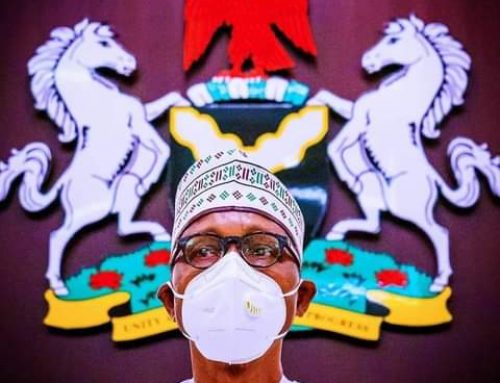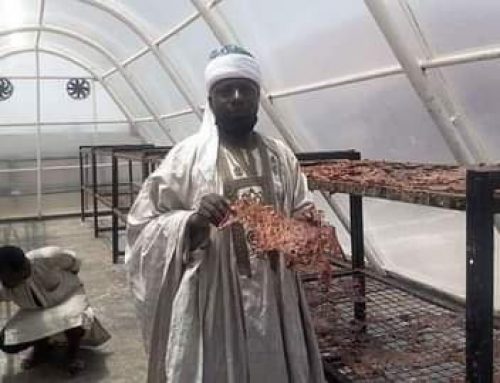Nigerian farmers were on the verge of planting the newly released Pod Borer Resistant (PBR) cowpea before the outbreak of COVID-19. The Regional Director, African Agricultural Technology Foundation (AATF), Dr Issoufou Kollo Abdourhamane, speaks on the impact of the pandemic on the release of the cowpea variety. COLLINS NNABUIFE brings excerpts.
HOW has the COVID-19 pandemic affected plans for the roll out of the PBR cowpea?
COVID-19 has altered our plans, but I think we can catch up with time. The only way farmers won’t have accees to our PBR cowpea seeds is if farmers cannot farm this coming season, but if farmers are going to farm and plant cowpea, then we can still work with farmers during the rainy season, because we have enough seeds to go on farm demonstration trials with our farmers. But for the commercial aspect it is delayed because we couldn’t use the last three months so it delayed us a little bit but not much, we can still meet with the deadline to get the seeds to farmers.
What plans do you have to mitigate some of the challenges encountered as a result of COVID-19?
We didn’t stop working, but we couldn’t do some activities like meeting with people coming from all parts of the country, but we were able to change how we meet, instead of travelling, we use electronic way of meeting, but there are certain activities that could not be carried out because as you know, the Ahmadu Bello University, Zaria closed, so it means all field activities in the school stopped, also some of the laboratory work, it is better to save the scientists instead of endangering their lives. But the impact is very minimal in our case.
We were told that Nigeria will gain N48bn annually from PBR cowpea, but some Nigerians are still in doubt.
We have the data, we didn’t fabricate these data, the data came from farmers managed trials during the National Variety Performance Trials, many farmers have been able to test on their own and compared it to other varieties.
We have two series of trials, one is on-station across Nigeria and across different local governments which has been selected by the essential people. So farmers are the one who manage their own trial.
When you look at the trials, the yield difference between the PBR cowpea and the other varieties of cowpea was about 70 per cent. The PBR cowpea yielded about 70 per cent higher, then when you look at the farmers managed trials, the yield of PBR cowpea is about 154 per cent superior compared to the yield of the other cowpea varieties.
So, the figure you gave is a calculation made by our colleagues from ABU, Zaria. But Nigeria has 3 million hectares of cowpea planted, so even if you have 20 per cent yield increase in this 3 million hectares, that’s the amount of money it can give you, and it is even underestimated on our side of what PBR cowpea can produce in a year.
So, we have the data, and this is the same data that has been presented to the National Variety Release Committee, so it is not the research team that collected the data, it is data collected by farmers and extension workers, and we firmly believe that the N48 billion is underestimated.
Recently, you had an MoU with the National Agriculture Extension and Research Liaison Service (NAERLS), can we have the details?
Public education is very important as you know. I think if scientists take time to think about what they are doing, the can explain everything to the public, the public are not ignorant, it maybe that we are the one ignorant to know how to explain things to them, and it is good for the public to know about PBR cowpea, so we choose the NAERLS based in Zaria, we like to collaborate with them because of their very good network to reach thousands of people at the same time, especially farmers and extension workers.
And as long as the extension workers are in the dark, you don’t have agricultural development, extension is very important for agricultural development, it is not only research.
Agricultural development, science and technology in agriculture have 2 legs, research and extension. So the NAERLS can reach all the extension workers in Nigeria and also millions of farmers, so it is very good to have collaboration with them.
What is the situation of the NEWEST rice project?
The project is progressing very well, we have finished the first year of data. If you want to get the variety approved by the National Biosafety Management Agency (NBMA), you have to provide scientific data that shows that the product is safe, so the first year of data has been collected, and we are in the second year of data collection. In agriculture, two cropping seasons are never alike, with what you see in one season, you can’t base your conclusion on it, you need at least two cropping seasons to be sure that your conclusions are valid, so we are in the second and last year of data collection, so hopefully next year we hope that the crop will be approved by NBMA.
On seed multiplication for PBR cowpea, have you selected the local seed companies that will participate?
We have made some selections, we have idea I’d the seed companies, we couldn’t finish the selection process because of the COVID-19, so we couldn’t invite some of them, and we couldn’t visit some of them, and we are planning a meeting with the seed companies, but definitely we want to see the seed companies benefit from the PBR cowpea to produce the certified commercial seeds from farmers and some to produce foundation seeds. Seed companies will be one of the biggest winners for PBR cowpea project.
TAAT catalyses commercialisation of High Iron Beans in Burundi
Common bean is a major food and cash crop for more than 90% of smallholder farmers in Burundi. Beans provide 20% of required calories and 50% of proteins, and are an entry point to tackle food insecurity, poverty and malnutrition.
The current average bean consumption is about 30 kg per person, per year.
However, Burundi also has high prevalence of micro-nutrient deficiencies – about 58% of children under five years are stunted, 56% are anemic, 35% are underweight and 7% are wasted. In addition, Zinc deficiency affects about 47% of the population.
Prompted by the need to address these constraints, the High Iron Beans Compact of Technologies for African Agricultural Transformation (TAAT) is set to address these micro-nutrient deficiencies in Burundi through scaling of three new High Iron Bean (HIB) varieties – MAC 44, RWV 1129 and MOORE88002.
The Alliance of Bioversity International and CIAT, working in partnership with the Institute of Agricultural Science of Burundi (ISABU), is promoting these three varieties alongside Good Agricultural Practices (GAPs) and processed bean products.
Key channels for seed distribution include Confédération des Associations des Producteurs Agricoles pour le Développement (CAPAD), Catholic Relief Services (CRS), World Vision, Tworore Tuiguze Imbuto, Terimbere Murimunyi, and Appui au Développement Intégral et la Solidarité sur les Collines (ADISCO).
Sponsored by the African Development Bank as part of its Feed Africa Initiative, TAAT’s main objective is to improve the business of agriculture across Africa by raising agricultural productivity, mitigating risks and promoting diversification and processing in 18 agricultural value chains within eight priority intervention areas.
The programme increases agricultural productivity through the deployment of proven and high-performance agricultural technologies at scale along selected nine commodity compacts which include High Iron Bean.
These work with six enabler compacts addressing transversal issues such as soil fertility management, water management, capacity development, policy support, attracting African youth in agribusiness and fall armyworm response.
Led by Alliance of Bioversity International and CIAT, the TAAT High Iron Bean Compact’s interventions build on the Pan Africa Bean Research Alliance (PABRA) model and the “Bean Corridor” as a market-driven approach to transformation at scale
Within one year of implementation, the TAAT-HIB Compact had catalyzed production of over 300 MT of breeder and basic seed and more than 700 MT of certified seed reaching close to 40,000 farmers. The early maturing and higher yielding HIB varieties have seen bean productivity in the interventions rise to 1.8 tons/ ha against an average of 0.75 tons/ ha in the region.
The HIB Compact has also catalyzed private sector investments in the commercialization of HIB products that are healthy and easy to cook.
Totahara, one of the processors of HIB value-added products in Burundi started out in the backyard of Mme. Christella’s Ndayishimiye, using open firewood to roast beans and tarpaulins for drying. She has since expanded to open up a factory that is distributing up to 12 tons of bean flour per month in Bujumbura.
Totahara has scaled up production and now supplies to 40 retail outlets in Burundi and exports to countries such as D.R Congo. Totahara flour – a porridge flour that incorporates HIBs – has become popular among development partners that focus on child nutrition. The use of the flour in 22 schools resulted in reduction of stunting levels from 58% to 52%.
“Since I started the factory, I have employed 12 people on permanent contract and have 30 youth distributors. My supportive husband has also joined the team and works full-time in the business. From one shop, I am currently distributing the Totahara flour to 40 other shops and also work with the Ministry of Health and NGOs such as World Vision who work on nutrition. It is not easy being a successful businesswoman in a male dominated business field, but learning, consistency and commitment is my key to business success” says Christella, the owner of Totahara.
The TAAT HIB Compact envisages that through public-private partnerships, bean farmers (including women and youth) will have access to better quality seed and complementary productivity-enhancement technologies.
Synergies are being built with development partners for up-scaling these technologies in line with the Feed Africa imperatives.
Credit: Nigerian Tribune





Leave A Comment